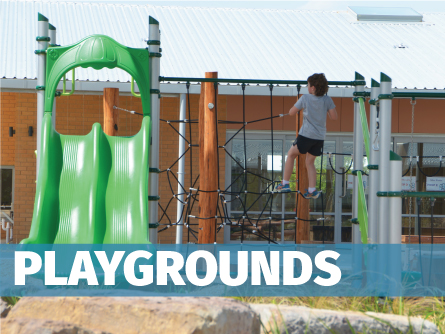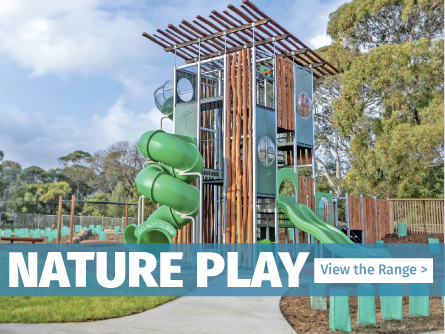
The design of school playground equipment has evolved beyond the traditional metal and plastic structures we have been used to. Designers, architects, and planners have recognized the immense benefits of incorporating natural textures into school playground designs. These natural elements not only enhance the aesthetic appeal of the space but also play a crucial role in promoting children’s physical, cognitive, and emotional development. The shift towards using natural textures in school playground designs signifies the removal of sterile environments and a move towards creating dynamic, engaging, and holistic spaces for children to thrive in.
Connecting with Nature
Children in today’s modern world spend more time indoors due to technology and landscaped suburban backyards and have limited exposure to nature compared to previous generations. Incorporating natural textures into school playground environments provides an opportunity for children to reconnect with nature. Whether it’s the feel of natural timber, the sensation of walking on undulated rocks, or uneven obstacles, these elements stimulate the senses and foster a deeper appreciation for the environment. Such connections can inspire a lifelong love for nature and a greater understanding of ecological systems along with huge advances in cognitive development.
Sensory Stimulation
Natural textures offer a diverse way of sensory experiences that contribute to children’s sensory development. The variety of sensations, such as the coolness of a stone, the warmth of sunlight on wood, or the sound of leaves crunching underfoot, help children refine their sensory processing skills. These experiences are particularly valuable for children with sensory sensitivities or those on the autism spectrum, as exposure to different textures can help them learn to regulate their responses and feelings.
Physical Development
Playgrounds designed with natural textures encourage more forms of physical activity. Unlike traditional playground equipment, natural elements provide a less structured play and more of a flexible environment. Children can climb on rocks, balance on logs, and traverse uneven terrains, which helps improve their balance, coordination, and fine motor skills. The varied surfaces and terrains also engage different muscle groups, promoting overall physical development and reducing the risk of repetitive strain injuries associated with conventional playgrounds.
Creativity and Imagination
Natural textures stimulate creativity and imaginative play. When presented with materials like sand, water, stones, and plants, children are inspired to create their own games and scenarios. A pile of sand becomes a construction site, logs transform into bridges or forts, and fallen leaves are ingredients in an imaginary adventure. This unstructured play fosters critical thinking, problem-solving, and the ability to envision and enact narratives—a valuable skill set that extends beyond the playground.
Emotional Well-being
The presence of natural textures in school playgrounds has a positive impact on children’s emotional well-being. Nature has a calming effect and can reduce stress and anxiety levels in both children and adults. When children interact with natural elements, their cortisol levels decrease, leading to improved mood and a greater sense of well-being. Additionally, natural environments encourage self-directed and self-paced play, allowing children to engage in activities that bring them joy and a sense of accomplishment.
Inclusive Design
Incorporating natural textures in school playground designs promotes inclusivity (inclusive play) by catering to a wider range of abilities. Unlike conventional play structures that may present barriers for children with disabilities, natural elements like ramps, sand, and textured pathways provide accessible play opportunities for all children.
This inclusive design philosophy fosters social interaction, cooperation, and empathy among children of varying abilities. The importance of natural textures in school playground designs cannot be overstated. From sensory stimulation and physical development to creativity and emotional well-being, the incorporation of natural elements enriches children’s overall growth and development.
By offering a multifaceted and engaging environment, school playgrounds with natural textures pave the way for a generation of children who are more connected to the natural world, more attuned to their senses, and more empowered to explore, discover, and grow.




